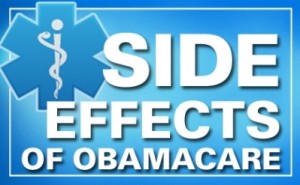
Democrats have worked overtime claiming that premiums offered in the ObamaCare exchanges aren’t as bad as everyone thought they’d be.
“Show me the rate shock” is their refrain. The White House even claims that six in 10 uninsured will be able to buy coverage for “under $100 per person per month.”
So just how could ObamaCare pile on costly new benefit mandates, require that insurers take everyone, not charge the sick more than the healthy, and keep rates low? Did Democrats manage to find a loophole in the law of supply and demand?
Well, no. Just because ObamaCare premiums didn’t come in as high as some expected doesn’t mean they’re not pricey, particularly for young people.
In fact, the cheapest ObamaCare Bronze plan available to 25-year-olds in several states will cost more than the median-priced plan in those states today, even after taking account of the subsidies.
In Virginia, a low-income 25-year-old will pay $127 a month for the cheapest plan after subsidies, according to the Kaiser Family Foundation. But the Government Accountability Office found that the mid-priced plan in Virginia today costs just $112 a month.
And as the New York Times discovered, even these ObamaCare prices are misleading, since the only way insurance companies could keep them low was by severely restricting their networks of doctors and hospitals.
It notes that a PriceWaterhouseCoopers study found “insurers passed over major medical centers” in many states to keep premiums down.
Those buying a Blue Cross plan in California’s exchange will have access to 47% fewer doctors and 22% fewer hospitals than subscribers can get today, the Times reports. The Blue Cross plan in New Hampshire excludes more than half of the state’s hospitals.
The result is that any patient who actually needs health care could end up having to choose between forgoing treatments or paying huge costs to go out of the network. Either way, they’ll get far less than promised. As the Times discovers, “having an insurance card does not guarantee access to specialists or other providers.”
No kidding. Welcome, New York Times, to the real world!
. . . . . . . . . . . . . . . .
This op-ed article was written by the editorial board of the Investors Business Daily.
